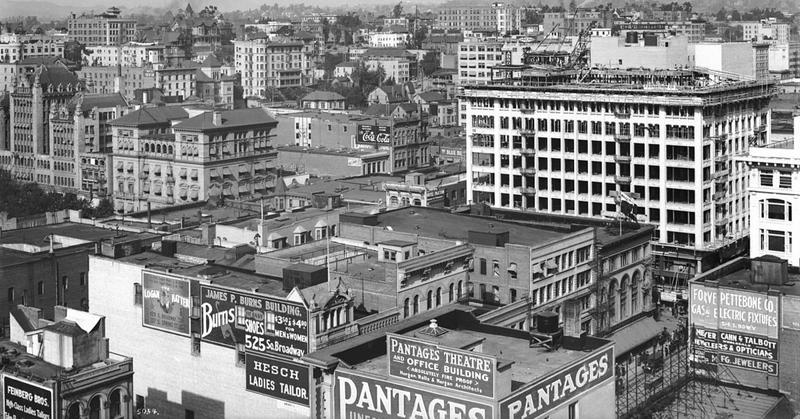How Independent Filmmakers Escaped Thomas Edison's Monopoly and Founded Hollywood in the 1910s
By Roger Goode | June 10, 2024
Go West Young Man
In the early 1910s, a group of visionary independent filmmakers embarked on a daring journey westward, seeking freedom from the iron grip of Thomas Edison's monopoly on film technology. These pioneers, driven by creativity and the promise of new opportunities, found their sanctuary in the sun-soaked landscapes of California. There, amidst the rolling hills and endless sunshine, they laid the foundation for what would become the epicenter of the global film industry: Hollywood. Join us as we explore the compelling story of how these maverick filmmakers broke free from Edison's control, transforming a small California town into the glamorous heart of cinema.

Before 1915, Los Angeles was just a desert, but Carl Laemmle and a small group of like-minded independent film distributors recognized that its vast, inexpensive space and incomparable light made it the perfect place to build movie studios. It was also thousands of miles away from Thomas Edison and his Menlo Park laboratory. Why would that matter? Well ...
Thomas Edison: Movie Maverick?
By the dawn of the 20th century, Thomas Edison held more than 1,000 patents, and he became as adept at protecting them as he was at recognizing genius and exploiting it. He owned many patents critical to the creation and presentation of movies, like an early motion picture camera called the Kinetograph and an early film projector, but not all of them, and rather than buy up the remaining patents to complete his megalomaniac bingo card, he formed a group with the other patent holders called the Motion Picture Patent Company. If you wanted to make or show a movie, you had to go through them.
Meanwhile In Chicago

Carl Laemmle is a true American success story. He immigrated to the United States from Germany in 1884 and spent the next 20 years working in Chicago. Then, "one rainy night," he recalled, "I dropped into one of those hole-in-the-wall five-cent motion picture theaters." The movie "made [him] laugh," but more importantly, he could help but notice that it made everyone else in the theater laugh, too. "I knew right away that I wanted to go into the motion picture business."
In 1906, Laemmle cobbled together his family's savings, all $3,000 of it, and put it all into what he called the "the coolest theater in Chicago," meaning in 1906 terms that it was well ventilated. The venture was so successful that Laemmle bought another theater and then another before deciding to make his own movies. That's when he crossed Thomas Edison.
Crossing Edison

To make movies, Laemmle had to find actors, but most of the known actors of the day were signed with Edison's Biograph Pictures, which the Wizard of Menlo Park ruled with an iron fist. He kept his actors under his thumb by preventing them from becoming well known—for example, completely wasting the name Florence Lawrence by crediting her as "The Biograph Girl"—and insisted that his movies, which he vigilantly kept under 20 minutes to retain his audience's attention span, be strictly educational and historical.
Laemmle didn't care about any of that, so he offered Lawrence the one thing Edison couldn't: name recognition. After stealing Edison's lead actress, Laemmle bought film stock and equipment from overseas, resolutely ignored the 289 infringement lawsuits that Edison threw his way, and prepared to make his fortune. To keep Edison's lawyers at bay, Laemmle and his buddies, known as "the independents" (though they went on to form some of the biggest movie studios in Hollywood, such as Warner Bros. and Paramount), headed west where nobody could find them. Even if they did, cross-country travel was prohibitively expensive at the time, and Edison's name didn't carry nearly as much weight on the West Coast. In 1914, Laemmle bought 230 acres of land in the San Fernando Valley for $165,000 and began constructing Universal Studios.
Beating Edison At His Own Game

The next year was a landmark year for Laemmle: He finished his studio and finally took the law into his own hands. He and William Fox (who later founded 20th Century Fox) filed antitrust lawsuits against Edison, winning the legal battle for the future of film once and for all. Edison was certain that audiences would continue to flock to his movies, but they jumped ship by the droves in favor of the independents' longer, more entertaining productions. The turn of events humbled Edison considerably. He even accepted an invitation to the dedication of Laemmle's new state-of-the-art studio, where the inventor did what everyone does at a red carpet event: smile, step, repeat.

